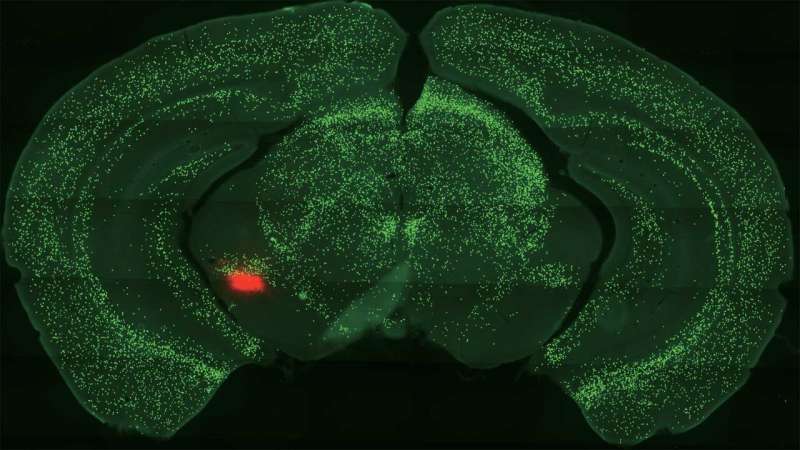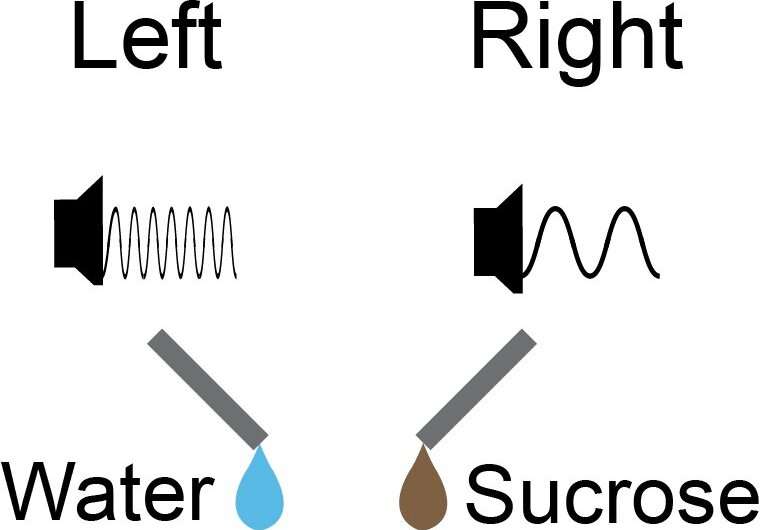This article has been reviewed according to Science X's editorial process and policies. Editors have highlighted the following attributes while ensuring the content's credibility:
fact-checked
peer-reviewed publication
trusted source
proofread
Danger or pleasure? How we learn to tell the difference

Deep within our brain's temporal lobes, two almond-shaped cell masses help keep us alive. This tiny region, called the amygdala, assists with a variety of brain activities. It helps us learn and remember. It triggers our fight-or-flight response. It even promotes the release of a feel-good chemical called dopamine.
Scientists have learned all this by studying the amygdala over hundreds of years. But we still haven't reached a full understanding of how these processes work.
Now, Cold Spring Harbor Laboratory neuroscientist Bo Li has brought us several important steps closer. His lab recently made a series of discoveries that show how neurons called somatostatin-expressing (Sst+) central amygdala (CeA) neurons help us learn about threats and rewards. He also demonstrated how these neurons relate to dopamine. The discoveries could lead to future treatments for anxiety or drug addiction.
To test how Sst+ CeA neurons help us learn, Professor Li and his colleagues trained mice to associate specific sounds with particular rewards or punishments. They imaged the mice's brains along the way.
Previously, scientists had assumed that the amygdala couldn't distinguish between good and bad stimuli. Li's team found that not only did the neurons respond differently to rewards versus punishments, but they responded differently to particular types of rewards. For example, if mice received water, their neurons fired differently than if they received food or sugar water.
Li says, "This is entirely new to us. These neurons really care about the nature of each individual stimulus. It's almost like a sensory area."

The team also saw that the mice's brains fired more Sst+ CeA neurons more strongly after training. This suggested the neurons are important for learning. To test this suspicion, the neuroscientists inhibited Sst+ CeA neurons in some of the mice. They found that these animals could not learn to associate sounds with rewards or punishments.
With the neurons inhibited, the team made another key finding. Normal dopamine neuron responses were also suppressed. While previous research had linked the CeA to dopamine neurons, it was unclear exactly how they were connected.
"We found those neurons are required for normal function for dopamine neurons, and therefore are important for reward learning," Li says. "That is direct evidence of how CeA neurons regulate the function of dopamine neurons."
Next, Li plans to examine the relationship between Sst+ CeA neurons and addiction. This could one day lead to better treatments for opioid or methamphetamine addicts, he says.
"Our study provides a basis for developing more specific ways to regulate these neurons in different disease conditions," Li says.
The study is published in the journal Nature.
More information: Bo Li, Plastic and stimulus-specific coding of salient events in the central amygdala, Nature (2023). DOI: 10.1038/s41586-023-05910-2. www.nature.com/articles/s41586-023-05910-2



















